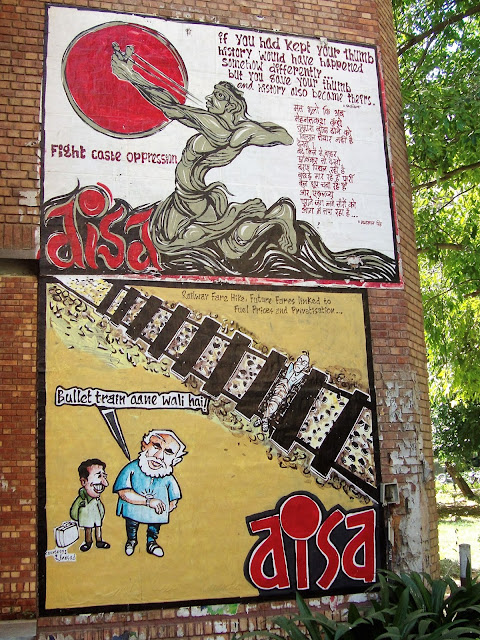First of all let me wish all the readers of my blog a happy, successful and peaceful 2016.
I was recently visiting a site of Buddhist Stupa remains which are 2100 years old and where at the same site carved statues and pillars and coins of Kushan period of 1 to 3 CE have been recovered. The site also revealed several artefacts of the Late Harappan period.
But today's' post is not about the site but the person I met there and who rendered Punjabi Folk music in his rustic voice.
Teja Singh, an employee of ASI is also a prolific Punjabi Folk singer. Here he sings in the majestic setting of Buddhist and Harappan ancient site of Sanghol in Punjab, India. The musical instrument that he is playing is called Tumba or Tumbi.
He is singing the folk song on the Punjabi legend Puran Bhagat.
Also read:
Buddhist Vestiges of Sanghol, Punjab
I was recently visiting a site of Buddhist Stupa remains which are 2100 years old and where at the same site carved statues and pillars and coins of Kushan period of 1 to 3 CE have been recovered. The site also revealed several artefacts of the Late Harappan period.
But today's' post is not about the site but the person I met there and who rendered Punjabi Folk music in his rustic voice.
 |
| Teja Singh on Tumba at Sanghol |
Teja Singh, an employee of ASI is also a prolific Punjabi Folk singer. Here he sings in the majestic setting of Buddhist and Harappan ancient site of Sanghol in Punjab, India. The musical instrument that he is playing is called Tumba or Tumbi.
Teja Singh on Tumba
He is singing the folk song on the Punjabi legend Puran Bhagat.
Also read:
Buddhist Vestiges of Sanghol, Punjab











































